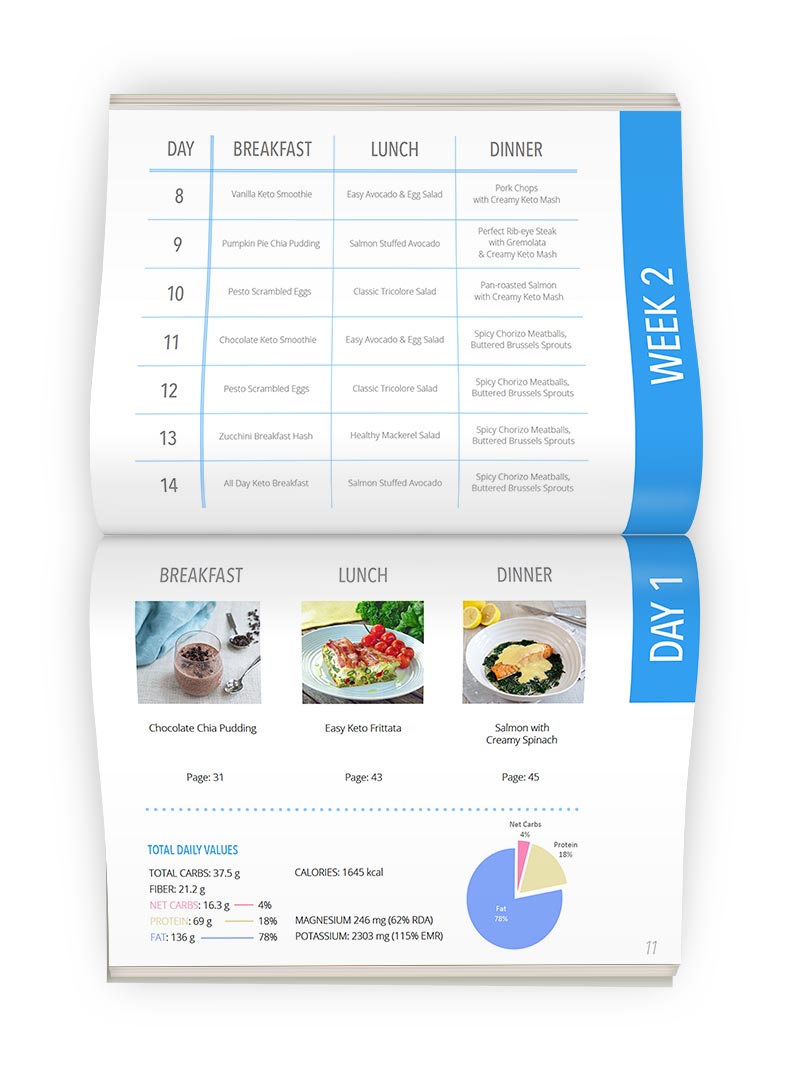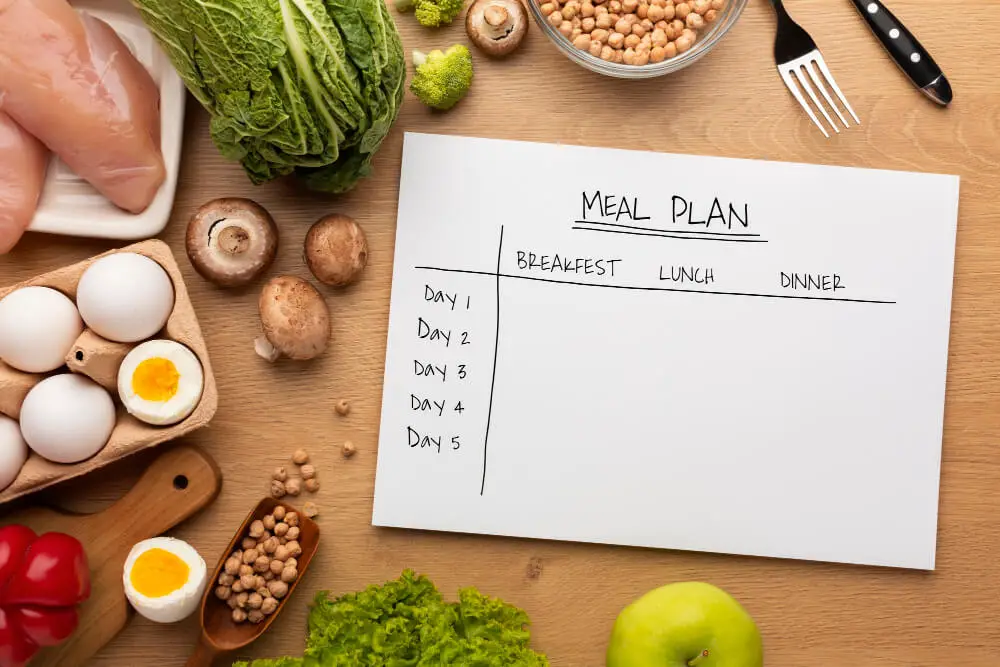Carb cycling is a popular meal plan that has gained traction in the fitness community. It involves cycling between high-carb and low-carb days to optimize energy levels and promote fat loss. This approach to eating can be a game-changer for those looking to achieve their weight loss goals while still enjoying their favorite foods.
Carb cycling has a rich history and has been used by athletes and bodybuilders for decades. The concept is simple: on high-carb days, you consume a higher amount of carbohydrates to fuel your workouts and support muscle growth. On low-carb days, you decrease your carbohydrate intake to promote fat burning. This method can help boost metabolism, improve insulin sensitivity, and provide sustainable energy for intense training sessions, making it an effective strategy for weight management and overall health.
Looking to optimize your carb cycling meal plan? Start by calculating your macronutrient ratios based on your goals. For high-carb days, focus on whole grains, fruits, and legumes for sustained energy. On low-carb days, incorporate lean proteins, vegetables, and healthy fats to promote fat burning. Remember to adjust your portion sizes to fit your calorie needs. Stay consistent with your plan and monitor your progress to make any necessary adjustments. With a well-designed carb cycling meal plan, you can achieve your fitness goals while enjoying a variety of delicious and nutritious foods.

The Basics of Carb Cycling Meal Plan
Carb cycling is a popular dietary approach that involves altering carbohydrate intake on different days of the week. This strategy can be used by individuals looking to manage their weight, improve athletic performance, or optimize their overall health. A carb cycling meal plan typically involves alternating between high-carb and low-carb days, with the goal of maximizing energy levels and promoting fat loss. By strategically timing carbohydrate intake, individuals can ensure their body has the necessary fuel during intense workouts and promote fat burning during periods of lower carbohydrate intake.
How Does Carb Cycling Work?
Carbohydrates are the body’s primary source of energy. When consumed, they are broken down into glucose, which is used to fuel various bodily functions and physical activity. However, consuming an excess of carbohydrates can lead to weight gain, especially if those carbohydrates are not utilized for energy and stored as glycogen in the muscles and liver. Carb cycling aims to manipulate carbohydrate intake to prevent excessive fat gain and promote fat loss.
On high-carb days, individuals consume a higher amount of carbohydrates, typically around 50-60% of their total daily caloric intake. This provides the body with an ample supply of glucose, which can be used for energy during workouts and other physical activities. The increased carbohydrate intake also helps replenish glycogen stores in the muscles and liver, ensuring optimum performance during intense exercise.
On low-carb days, carbohydrate intake is drastically reduced to around 10-20% of total daily calories. This forces the body to rely on stored fat as the primary source of fuel. By depleting glycogen stores, the body is encouraged to tap into its fat stores for energy. This can lead to increased fat burning and potentially weight loss over time. Additionally, the low-carb days help improve insulin sensitivity, which is vital for regulating blood sugar levels and preventing fat storage.
| Day | Carb Intake | Protein Intake | Fat Intake |
|---|---|---|---|
| Monday | High | Moderate | Low |
| Tuesday | Low | High | Moderate |
| Wednesday | Medium | Moderate | Moderate |
| Thursday | Low | High | Moderate |
| Friday | High | Moderate | Low |
| Saturday | Medium | Moderate | Moderate |
| Sunday | Low | High | Moderate |
Pros of Carb Cycling
1. Flexible and Sustainable: Carb cycling offers flexibility in terms of food choices and allows individuals to follow a more sustainable dietary approach rather than strict and restrictive diets.
2. Enhanced Performance: By strategically timing high-carb days around intense workouts, individuals can optimize their performance and endurance during training sessions.
3. Fat Loss and Muscle Retention: By cycling between high and low-carb days, individuals can promote fat loss while minimizing muscle loss. The low-carb days encourage the body to tap into stored fat for energy.
Cons of Carb Cycling
1. Complexity: Carb cycling may require careful planning and tracking of macronutrients, which can be challenging for some individuals.
2. Individual Variability: The ideal carbohydrate intake and cycling pattern may vary for each individual based on their goals, activity level, and metabolic rate.
3. Potential for Overeating: On high-carb days, individuals may be tempted to consume excessive calories, which can hinder weight loss progress.
Implementing a Carb Cycling Meal Plan
1. Determine Your Goals: Before starting a carb cycling meal plan, determine your specific goals, whether it’s weight loss, muscle gain, or athletic performance improvement.
2. Calculate Your Macronutrient Needs: Determine the appropriate macronutrient ratio for your high-carb and low-carb days based on your goals and activity level.
3. Plan Your Meals: Create a meal plan for each day, ensuring that you include a variety of healthy carbohydrates, lean proteins, and healthy fats.
4. Track Your Progress: Keep track of your food intake and monitor how your body responds to carb cycling. Adjust your plan as necessary based on your progress and goals.
Benefits of Carb Cycling for Energy and Weight Management
Carb cycling not only offers benefits for weight loss and muscle retention but also provides advantages for energy management and overall well-being. By strategically manipulating carbohydrate intake, individuals can optimize their energy levels, promote fat burning, and improve insulin sensitivity. This approach is especially beneficial for athletes, individuals with specific dietary needs, and those seeking a flexible and sustainable dietary approach.
Optimizing Energy Levels
Carbohydrates are the body’s preferred source of energy, particularly during high-intensity physical activities. By timing higher carbohydrate intake on workout days, individuals can ensure they have enough energy to fuel their workouts and perform at their best. The increased glycogen stores from high-carb days also provide a readily available energy source, promoting endurance during longer workouts or competitions.
On low-carb days, the body becomes more efficient at utilizing stored fat for energy. While this may result in lower energy levels initially, the body adapts over time and becomes more efficient at burning fat for fuel. This can lead to increased energy levels and improved stamina in activities that require sustained effort.
By optimizing energy levels through carb cycling, individuals can prevent energy crashes, improve overall performance, and maintain higher energy levels throughout the day.
Promoting Fat Burning
Carb cycling promotes fat burning by strategically depleting glycogen stores on low-carb days. When carbohydrate intake is limited, the body turns to fat stores as the primary source of fuel, leading to increased fat burning. This can be beneficial for individuals looking to lose weight or reduce body fat percentage.
Additionally, the low-carb days improve insulin sensitivity. Insulin is a hormone responsible for regulating blood sugar levels and promoting fat storage. By improving insulin sensitivity, carb cycling can help prevent excessive fat storage and promote a healthier body composition.
By strategically alternating between high and low-carb days, individuals can optimize fat burning and promote weight loss while maintaining energy for physical activity.
Improving Insulin Sensitivity
Insulin sensitivity refers to how sensitive the body’s cells are to the effects of insulin. Individuals with poor insulin sensitivity may struggle to regulate blood sugar levels and have a higher risk of developing conditions such as type 2 diabetes and obesity.
Carb cycling can improve insulin sensitivity by reducing the frequency and magnitude of blood sugar spikes caused by high carbohydrate intake. On low-carb days, blood sugar levels remain more stable, reducing the demands on insulin production. Over time, this can lead to improved insulin sensitivity and better overall blood sugar control.
By incorporating carb cycling into their meal plan, individuals can enhance their body’s ability to regulate blood sugar levels, promote weight management, and reduce the risk of chronic diseases.
Summary
Carb cycling is a dietary approach that involves alternating between high and low-carb days. It can offer numerous benefits, including optimized energy levels, enhanced fat burning, and improved insulin sensitivity. By strategically timing carbohydrate intake, individuals can achieve their weight management goals, improve athletic performance, and maintain a flexible and sustainable dietary approach. If you are considering carb cycling, it is recommended to consult with a registered dietitian or nutritionist to develop a customized plan based on your specific needs and goals.
Carb Cycling Meal Plan
A carb cycling meal plan is a well-structured diet strategy that involves alternating carbohydrate intake on different days to optimize fat loss and muscle gain. It is commonly used by athletes and bodybuilders to manipulate their carbohydrate consumption based on their training schedule and goals.
Here’s a simple carb cycling meal plan that can be followed:
| Day | Carbohydrate Intake | Meal Examples |
|---|---|---|
| High Carb Day | 70-80% of total calories | Whole grain bread, fruits, brown rice, sweet potatoes |
| Low Carb Day | 30-40% of total calories | Leafy greens, lean proteins, avocado, nuts |
| Medium Carb Day | 50-60% of total calories | Quinoa, oats, beans, berries |
It is important to adjust the portion sizes and total calorie intake based on individual needs and goals. This plan can be customized to fit specific dietary restrictions and preferences.
Consulting with a nutritionist or dietitian is recommended before starting any new meal plan to ensure it aligns with your specific needs and goals.

Frequently Asked Questions
Carb cycling is a popular approach to dieting that involves alternating between high-carb and low-carb days. It is commonly used for weight loss, muscle building, and improving athletic performance. If you’re considering trying a carb cycling meal plan, here are some frequently asked questions and their answers to help you understand the concept better.
1. How does carb cycling work?
Carb cycling works by manipulating your carbohydrate intake depending on your activity level and fitness goals. On high-carb days, you consume more carbohydrates to provide energy for intense workouts and replenish glycogen stores. On low-carb days, you reduce your carbohydrate intake to promote fat burning and insulin sensitivity. This cycle allows you to enjoy the benefits of both high and low-carb diets while optimizing your body’s response to carbohydrates.
2. What are the benefits of carb cycling?
Carb cycling offers several benefits, including improved fat loss, muscle preservation, increased metabolic flexibility, and improved athletic performance. By strategically timing your carbohydrate intake, you can optimize your body’s ability to burn fat while still providing enough fuel for intense workouts. It also helps to maintain muscle mass and prevent metabolic adaptations that can hinder weight loss progress. Additionally, carb cycling enhances insulin sensitivity, allowing your body to better utilize carbohydrates for energy.
3. How do I create a carb cycling meal plan?
Creating a carb cycling meal plan involves determining your individual carbohydrate needs and dividing them into high-carb and low-carb days. Start by calculating your total daily calorie intake and then allocate the percentage of calories that should come from carbohydrates. On high-carb days, aim to consume 45-55% of your calories from carbs, while on low-carb days, aim for 10-30% of your calories from carbs. Focus on nutrient-dense foods, including lean proteins, healthy fats, fruits, vegetables, and whole grains. It’s also crucial to adjust your meal plan based on your activity level and goals.
4. Can anyone do a carb cycling meal plan?
While carb cycling can be effective for many individuals, it may not be suitable for everyone. It is generally recommended for individuals who are already following a consistent exercise routine and have a good understanding of macronutrients and their body’s response to carbohydrates. If you have any underlying health conditions or are on specific medications, it’s essential to consult with a healthcare professional or registered dietitian before starting a carb cycling meal plan. They can provide personalized guidance based on your unique needs.
5. Are there any potential drawbacks to carb cycling?
While carb cycling can offer numerous benefits, it’s important to be aware of potential drawbacks. Some individuals may find it challenging to adhere to the cycling schedule, especially during social events or when dining out. It requires planning and preparation to ensure you have the right foods available for each day. Moreover, carb cycling may not be suitable for those with certain medical conditions or dietary restrictions. Additionally, it’s crucial to listen to your body and make adjustments as needed. If you experience any negative effects or changes in performance, it may be necessary to modify your carb cycling approach or seek professional guidance.
What Is Carb Cycling? Can It Work For Fat Loss? | Nutritionist Explains | Myprotein
So there you have it, a carb cycling meal plan can be a helpful tool for managing your carb intake and optimizing your energy levels. By alternating between high and low carb days, you can support your fitness goals while still enjoying a varied and satisfying diet.
Remember, it’s important to listen to your body and adjust your carb cycling plan as needed. Consulting with a registered dietitian or nutritionist can also provide personalized guidance and ensure you’re meeting your nutritional needs. Give carb cycling a try and see how it works for you!
Other Post –
- The Top 10 Bike Repair Kits of 2024 – Read More
- Top 10 Ebike Battery 2024 – Read More
- Motorized Bikes – Read More
- Winter Cycling Gear Of 2024 – Read More
- The Top Bicycle Pumps of 2024 – Your Guide to Efficient Inflation and Smooth Rides – Click Here


